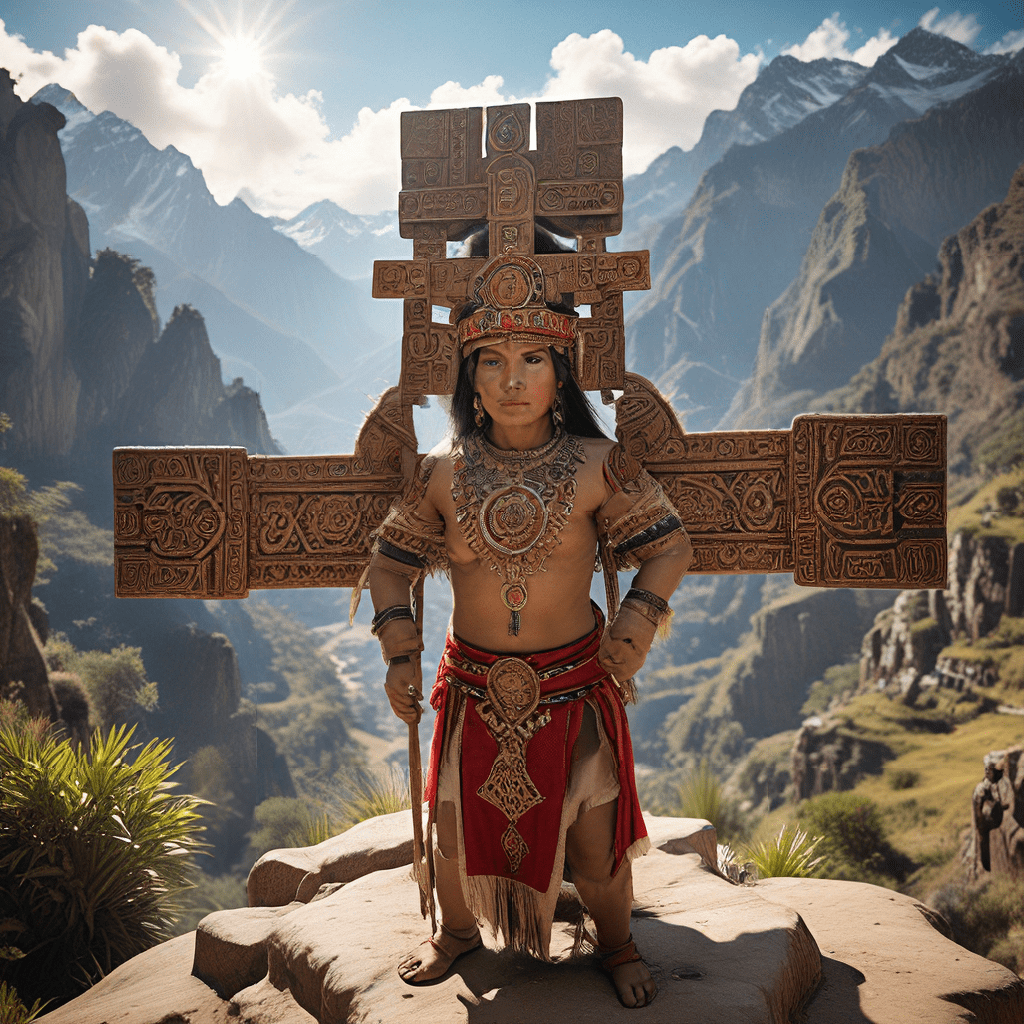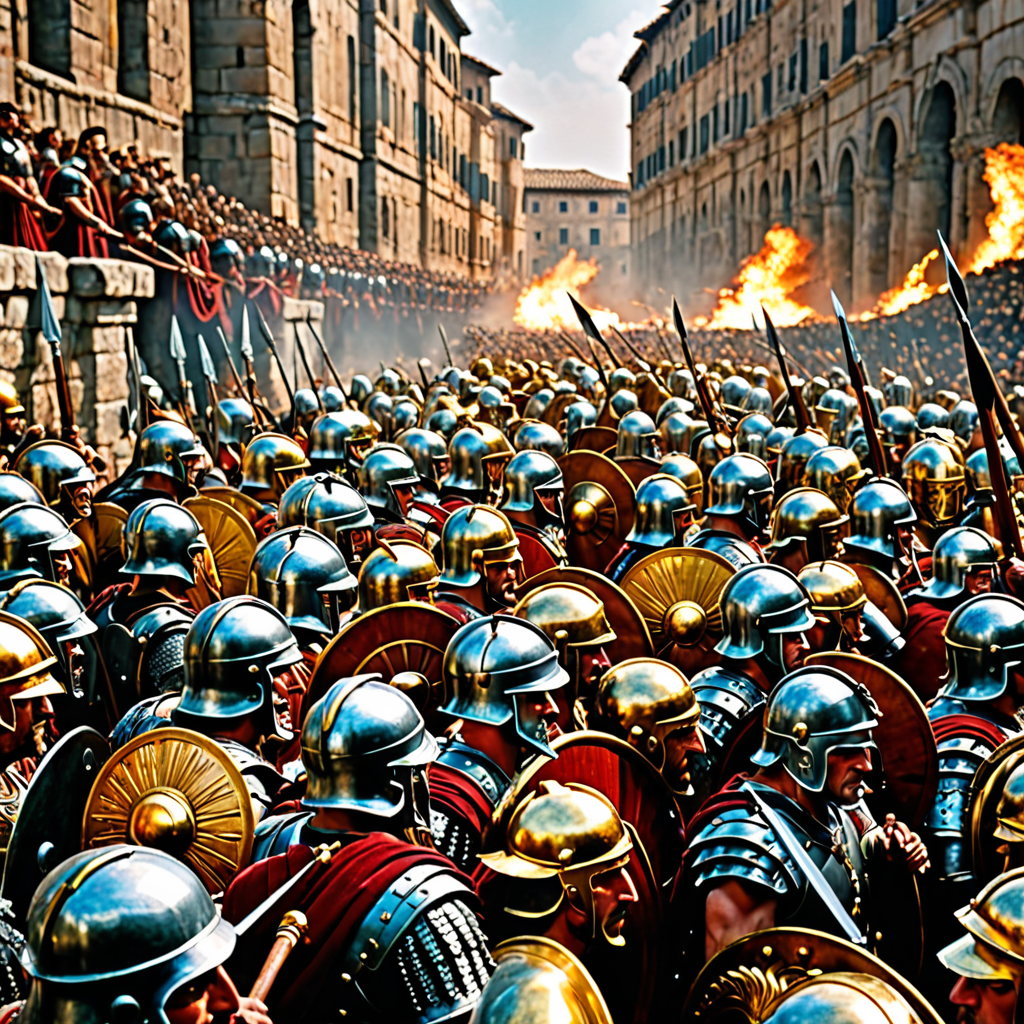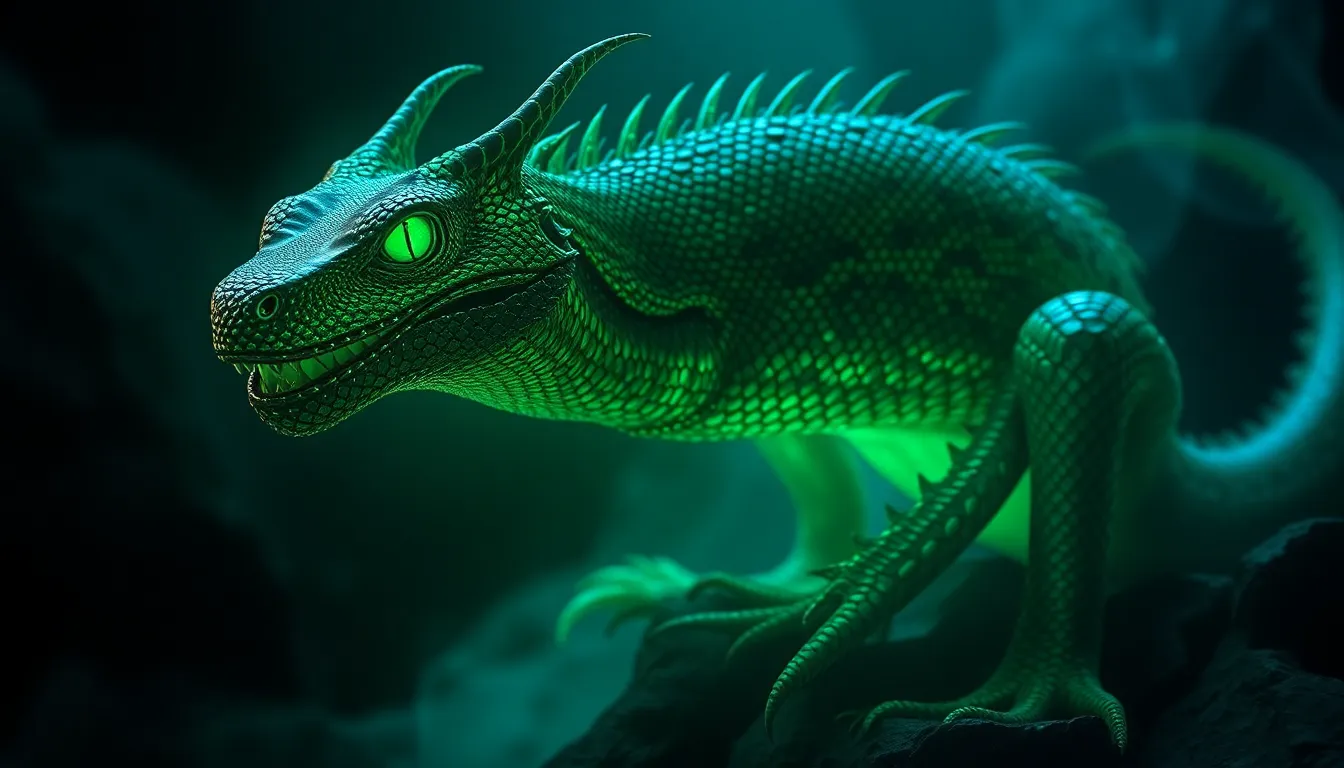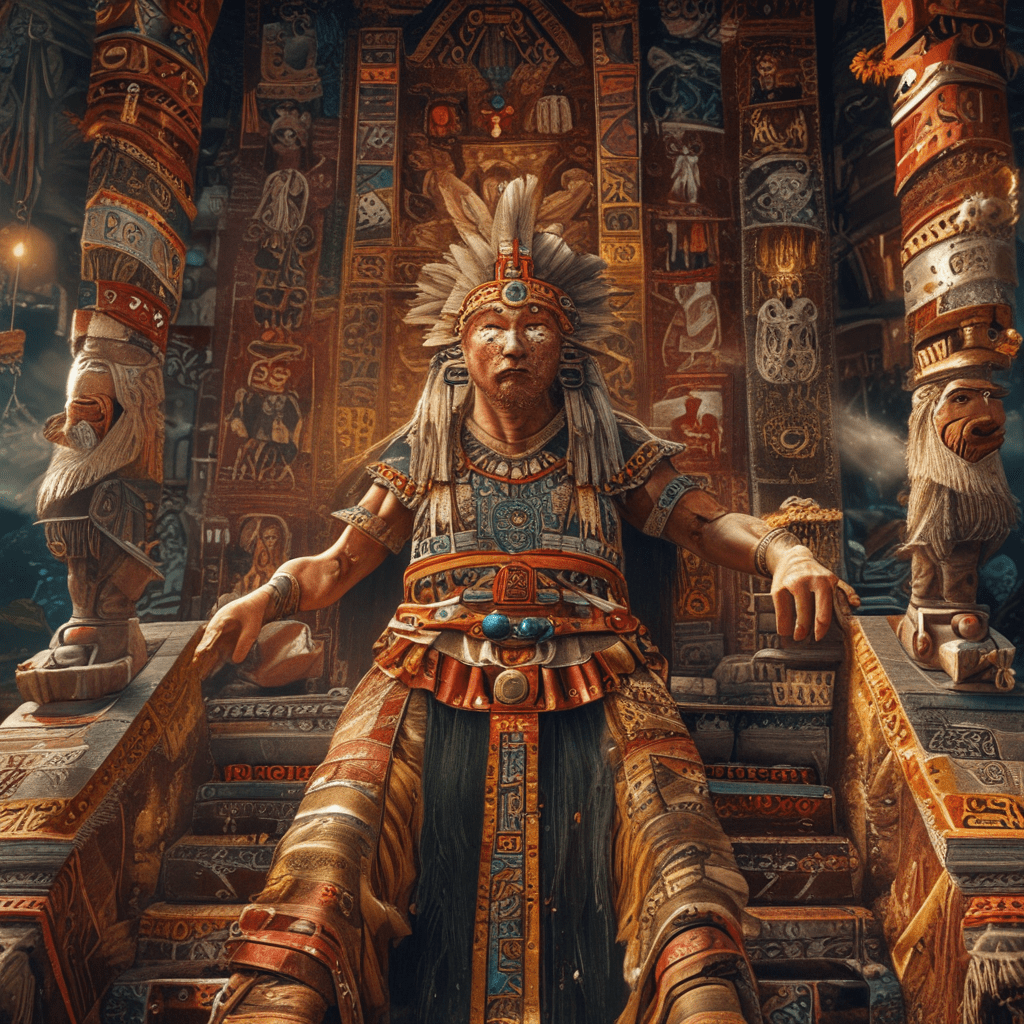The Chakana: A Sacred Symbol of the Inca Empire
The Chakana, also known as the Andean Cross, is a sacred symbol deeply rooted in the ancient Incan civilization of South America. This iconic symbol, resembling a cross with four arms, holds profound significance in Inca mythology and worldview. The Chakana represents a powerful connection to the cosmos, representing the balance and harmony between the physical and spiritual realms, the celestial and the terrestrial.
The origins of the Chakana can be traced back to the ancient Andean cultures that existed long before the Incas. Its presence is found in various forms across the Andean region, etched into stone, carved into wood, and woven into textiles. The Chakana was an integral part of Inca life, serving as a visual representation of their beliefs and values.
The Mythological Significance of the Chakana
The Chakana is not just a geometric design; it's a story etched in stone. The Inca believed that the Chakana was a bridge between the three levels of existence, the "Hanan Pacha" (upper world), the "Kay Pacha" (middle world), and the "Uku Pacha" (lower world). These levels represent the heavens, the earth, and the underworld respectively. The Chakana symbolized the journey of the soul through these realms, ultimately reaching spiritual enlightenment.
The Chakana was also believed to be a sacred symbol of the sun, the source of life and energy. It was associated with Inti, the Inca sun god, and his powerful influence on the natural world. The four arms of the Chakana were often interpreted as representing the cardinal directions, symbolizing the sun's journey across the sky. This solar association further solidified the Chakana's status as a powerful symbol of cosmic order.
The Chakana as a Representation of the Cosmos
The Chakana's symbolic representation of the cosmos underscores the importance of astronomy and celestial observations in the Inca worldview. The Incas were keen observers of the stars and planets, using their knowledge to navigate, predict the seasons, and understand the rhythms of nature.
The Chakana, with its four arms, is often interpreted as symbolizing the Milky Way, the celestial band of stars that stretches across the night sky. The three levels of the Chakana, Hanan Pacha, Kay Pacha, and Uku Pacha, are also reflected in the celestial sphere, with the Milky Way dividing the heavens into three distinct regions. This cosmic connection highlights the Chakana's role as a tangible representation of the vast and interconnected nature of the universe.
The Chakana’s Connection to the Andean Worldview
The Chakana is a powerful symbol that encapsulates the Andean worldview. The Andean people held a deep reverence for nature and believed in the interconnectedness of all things. The Chakana reflects these beliefs, symbolizing the delicate balance and harmony between the physical and spiritual realms.
The three levels of the Chakana—the upper world, the middle world, and the lower world—are not separate entities but interconnected aspects of a single reality. The Chakana reminds us that our actions in the physical world have consequences for the spiritual realm and vice versa.
The Three Levels of the Chakana: Upper, Middle, and Lower Worlds
The three levels of the Chakana represent the three distinct realms of existence in the Andean worldview. The Hanan Pacha, the upper world, is the realm of the gods, spirits, and celestial bodies. This is the place of light, knowledge, and spiritual enlightenment.
The Kay Pacha, the middle world, is the earthly realm where humans reside. This is the world of nature, agriculture, and daily life. The Uku Pacha, the lower world, is the realm of the ancestors, the underworld, and the unseen forces of nature. It is a place of darkness, mystery, and the origins of life.
The Chakana's depiction of these three levels highlights the importance of balance between the physical and spiritual realms. The Inca believed that the soul journeyed through all three levels, undergoing trials and transformations before reaching spiritual enlightenment. The Chakana served as a reminder of this spiritual journey and the importance of living a life in harmony with the natural world.
The Chakana as a Symbol of Balance and Harmony
The Chakana’s four symmetrical arms represent balance and harmony, crucial concepts in the Inca worldview. The Incas believed that the universe was governed by a delicate balance of opposing forces, like day and night, light and darkness, male and female. This balance, they believed, was essential for the well-being of the world. The Chakana symbolizes this concept, reminding people to strive for balance in all aspects of life, including their relationships with nature, their community, and their inner selves.
The Chakana also represents the interconnectedness of all things. Each arm of the Chakana represents a different aspect of the universe, showing that everything is connected and interdependent. The Incas believed that maintaining harmony within oneself and with the natural world was crucial for a fulfilling life and for the survival of the community. The Chakana serves as a reminder to respect the interconnectedness of all things and to live in harmony with the earth.
The Chakana’s Role in Inca Rituals and Ceremonies
The Chakana was more than just a symbol; it was a powerful tool used in Inca rituals and ceremonies. Inca priests and shamans used the Chakana as a guide for their spiritual practices, connecting with the cosmos and seeking guidance from the divine. The four arms of the Chakana were often associated with the cardinal directions, allowing the priests to align themselves with the celestial forces and channel their energy.
The Chakana was also used in agricultural rituals, particularly during the planting and harvest seasons. The Incas believed that the Chakana represented the cycle of life, death, and rebirth, and that aligning their actions with the rhythms of nature would ensure a bountiful harvest.
Interpretations of the Chakana’s Symbolism
Over time, the Chakana has been interpreted in various ways, reflecting different perspectives and cultural influences. Some scholars see the Chakana as a representation of the four elements of earth, air, fire, and water, signifying the interconnectedness of these fundamental forces. Others view it as a symbol of the four cardinal directions, signifying the sun's journey across the sky.
Despite these varying interpretations, the Chakana's core symbolism remains consistent: it represents the interconnectedness of the universe, the balance of opposing forces, and the spiritual journey of the soul.
Theories of the Chakana’s Origin and Meaning
The origins of the Chakana remain somewhat shrouded in mystery. Some scholars believe that the symbol originated with the ancient Tiwanaku civilization, predating the Incas. Others suggest that the Chakana originated independently in different parts of the Andes, reflecting common beliefs and cultural practices.
The precise meaning of the Chakana remains a subject of debate, with scholars offering various interpretations. Some suggest that it represents the Milky Way galaxy, while others believe it symbolizes the four stages of human life. Regardless of its specific meaning, the Chakana remains a powerful symbol that continues to inspire awe and wonder.
The Chakana’s Enduring Legacy in Andean Culture
The Chakana's legacy extends far beyond the Inca Empire. It remains a potent symbol in Andean culture, representing the legacy of their ancestors and the enduring connection to the land. The Chakana can be found in various forms throughout the Andean region, including textiles, jewelry, and architecture.
The Chakana has also become a symbol of Andean identity and resistance, representing the resilience and strength of the indigenous peoples of the Andes. It serves as a reminder of their rich cultural heritage and their ongoing struggle for self-determination.
FAQ
What is the Chakana?
The Chakana is an ancient symbol from the Andes region of South America, resembling a cross with four arms.
What does the Chakana represent?
The Chakana represents various concepts, including the interconnectedness of the universe, the balance of opposing forces, and the spiritual journey of the soul.
What is the significance of the Chakana in Inca mythology?
In Inca mythology, the Chakana is a sacred symbol that connects the three realms of existence: the upper world, the middle world, and the lower world.
What is the role of the Chakana in Inca rituals and ceremonies?
The Chakana was used in Inca rituals and ceremonies as a guide for spiritual practices, connecting with the cosmos and seeking guidance from the divine.
Why is the Chakana still important today?
The Chakana continues to be a powerful symbol in Andean culture, representing their cultural heritage and their ongoing struggle for self-determination.



